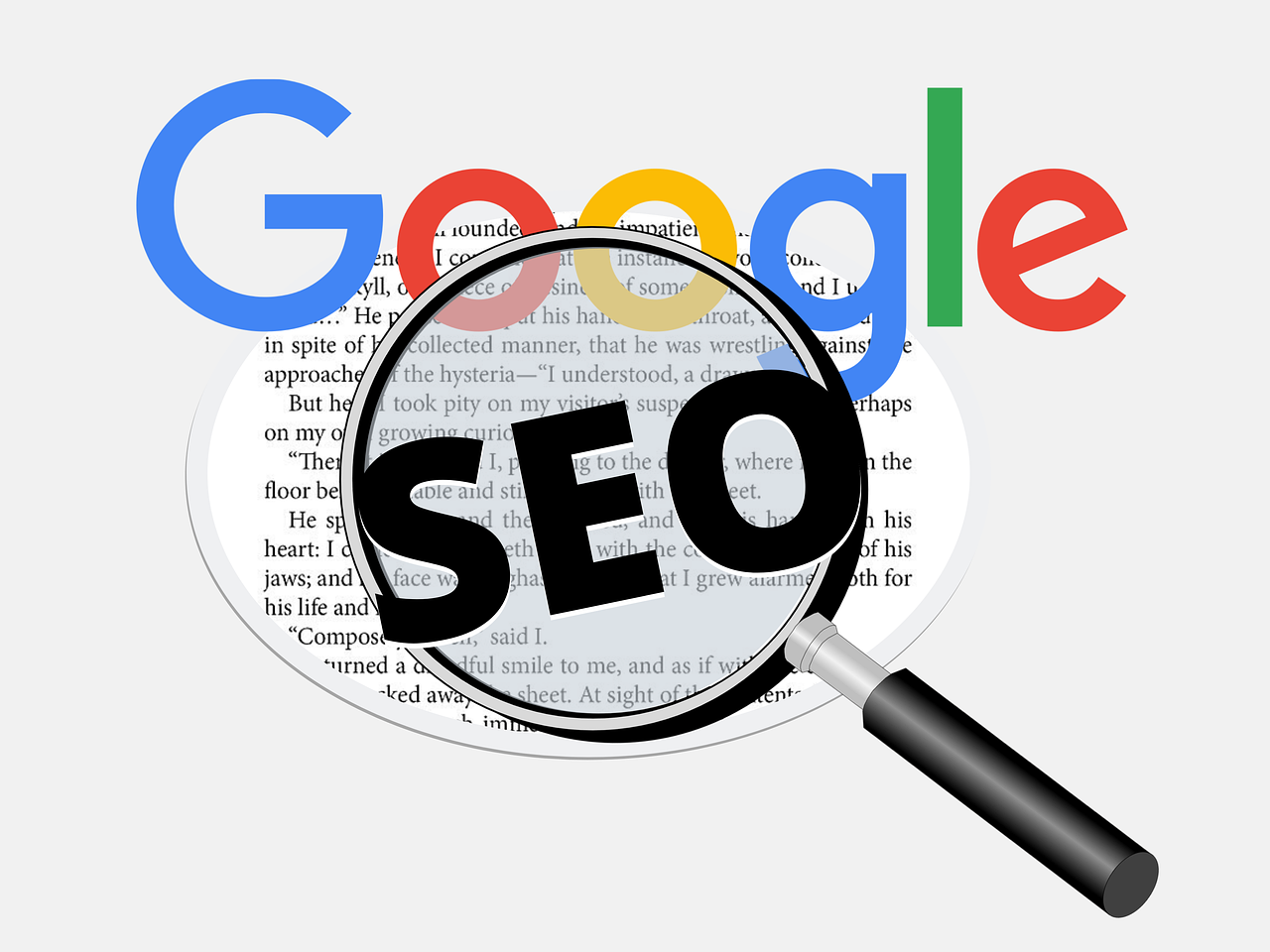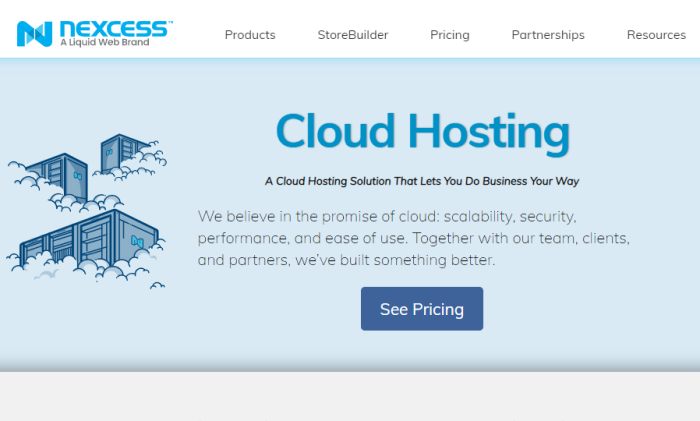The 10 Best Headless CMS Platforms To Consider via @sejournal, @MattGSouthern
These solutions are ideal for developers seeking a decoupled approach. Explore our top picks and make an informed decision. The post The 10 Best Headless CMS Platforms To Consider appeared first on Search Engine Journal.
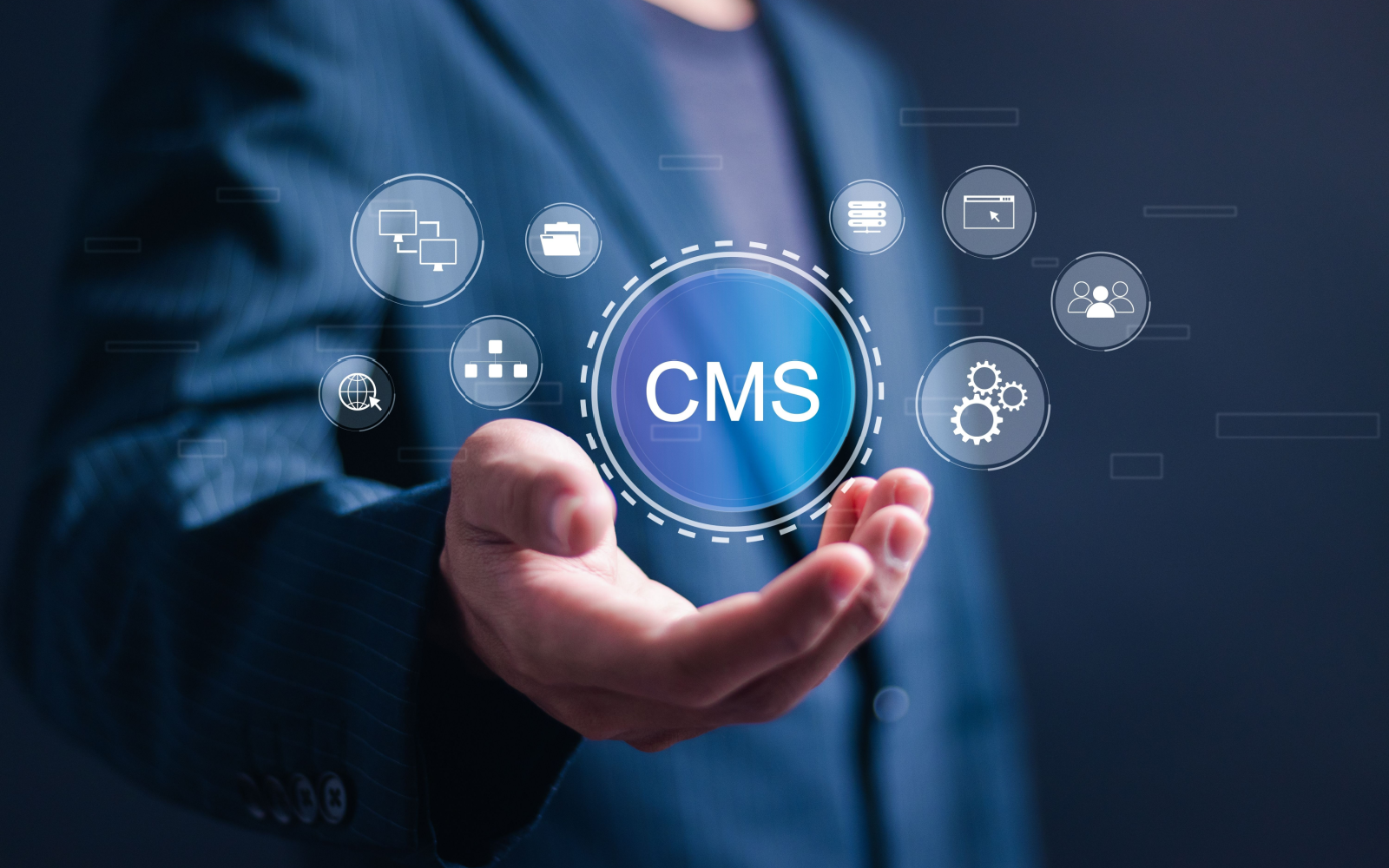
Headless CMSs are becoming more popular as companies want more flexible content management tools.
These systems separate the content creation from how it’s displayed, giving more options for publishing content across different platforms.
In this article, we’re reviewing ten top headless CMS options. We’re examining them based on the following criteria:
How well they work with other tools. How easy they are for developers to use. How flexible they are for organizing content.We’ve included enterprise-level systems and free, open-source ones to cover different needs and technical skill levels. This comparison should help teams understand their options and figure out which platforms might work best for their specific projects.
Here are the best headless CMS platforms to consider.
1. Sanity2. Storyblok3. Hygraph4. Contentful5. Contentstack6. Strapi7. Directus8. Umbraco Heartcore9. Kontent.ai10. PrismicWhy Should You Use A Headless CMS Platform?
Headless CMS platforms have become increasingly popular for good reasons.
They offer several advantages over traditional content management systems, including:
Flexibility: Publish once, display anywhere – from websites to apps to smart devices. Developer-Friendly: Devs can use their favorite tools, speeding up project timelines. Performance: API-driven content delivery often means quicker load times. Future-Proof: Easily adapt to new tech without overhauling your whole system. Security: Backend separation reduces exposure to potential threats. Scaling: Grow your content or expand to new markets without hitting technical roadblocks. Teamwork: Features like real-time editing streamline the content creation process.While not a one-size-fits-all solution, a headless CMS is worth considering if you need a flexible, scalable content system that can keep up with changing tech.
10 Best Headless CMS Platforms
1. Sanity
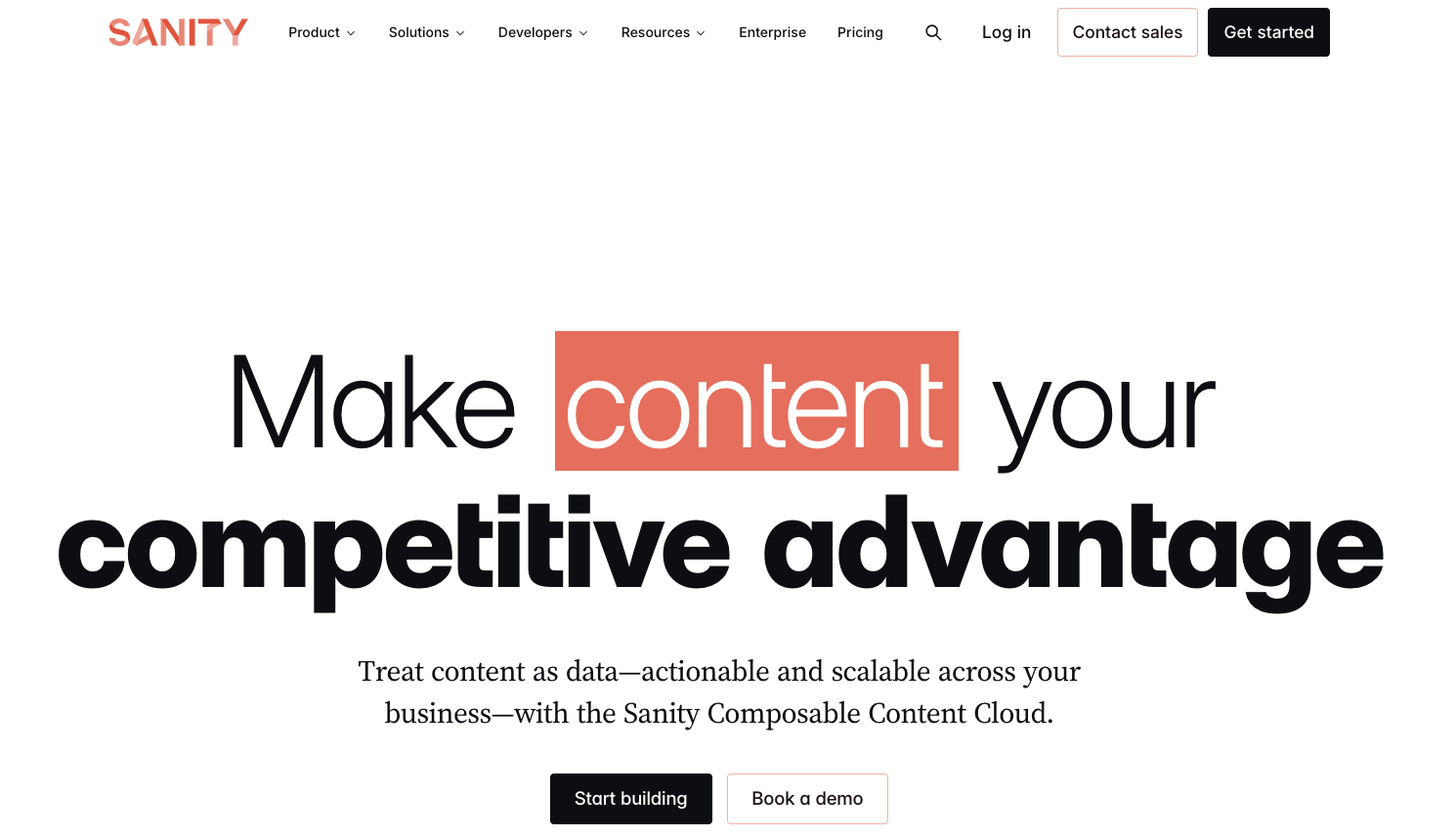 Screenshot from: sanity.io, July 2024.
Screenshot from: sanity.io, July 2024.
Sanity is a good fit for small to medium-sized teams prioritizing real-time collaboration and a customizable content studio.
In practice, Sanity works well for structuring and managing content, such as product information, for e-commerce sites. Its GROQ query language allows for flexible content retrieval and filtering.
Why It’s Good:
Real-time collaboration with live multi-user editing. Flexible, schema-driven content modeling for structured content. Customizable Content Studio for intuitive editorial experience. Pay-as-you-go pricing is suitable for scaling projects.Potential Drawbacks:
Steeper learning curve for non-technical users compared to traditional CMSs. Requires development resources for initial setup and ongoing maintenance.Tips and Tricks:
Use GROQ queries for flexible content retrieval and filtering. Leverage Portable Text for rich text content with embedded objects. Customize input components in Content Studio for optimal editorial UX.Best Hack:
Set up a real-time preview using Next.js and Sanity’s Listener. Changes in the Content Studio will instantly update the front end, providing a true WYSIWYG editing experience for content teams.2. Storyblok
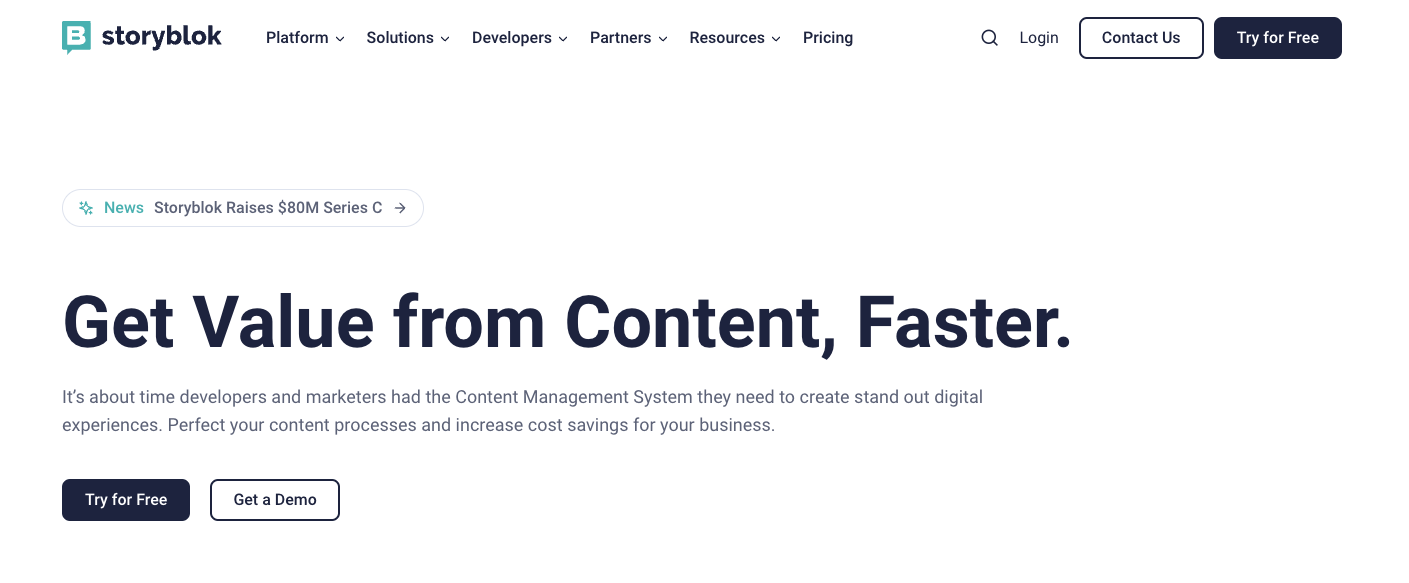 Screenshot from: storyblok.com, July 2024.
Screenshot from: storyblok.com, July 2024.
Storyblok’s key selling point is its visual editor, which empowers marketers to create and manage content independently.
It’s been successfully used for multilingual corporate sites. The visual editor simplifies content updates, while features like field-level translations streamline localization.
Why It’s Good:
Visual editor for drag-and-drop page building. Reusable block system for modular content creation. Field-level translations for multi-language content. Roles and permissions for content governance.Potential Drawbacks:
Some technical setup is required to fully leverage the visual editor. Pricing can add up for larger-scale projects with higher content needs.Tips and Tricks:
Utilize nested components for flexible, reusable page sections. Set up Language Fallbacks to gracefully handle missing translations. Integrate with Sketch/Figma for a design-to-CMS workflow.Best Hack:
With Storyblok’s Visual Composer within Content Stages, you can build and preview pages in a draft stage before pushing them live.3. Hygraph
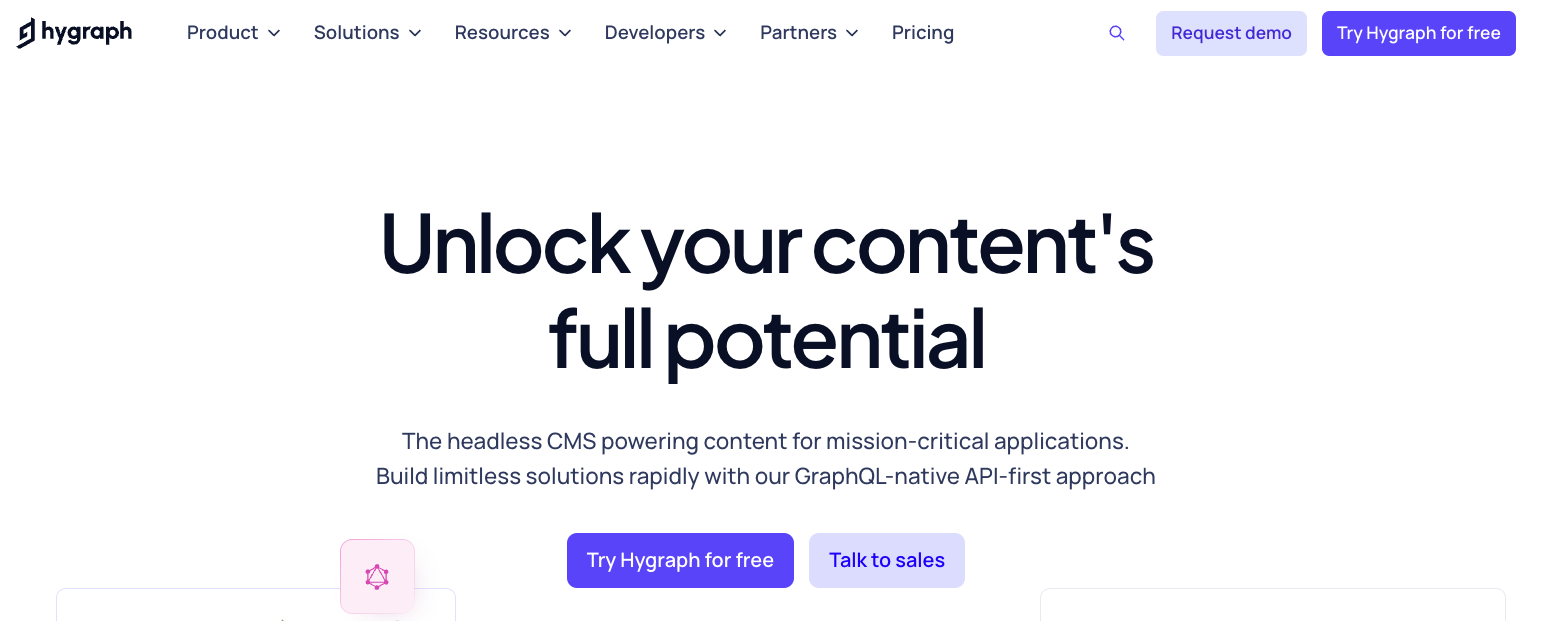 Screenshot from: hygraph.com, July 2024.
Screenshot from: hygraph.com, July 2024.
Formerly GraphCMS, Hygraph stands out for its GraphQL-native approach and Content Federation capabilities for unifying data from disparate sources.
Hygraph has been used to power blogs with user-generated content. Authors can submit posts via forms, which are managed in Hygraph. Content Federation allows merging this with e-commerce data to create shoppable posts.
Why It’s Good:
Intuitive GraphQL API for efficient content querying. Visual schema builder for modeling content without code. Content Federation is used to unify data from multiple sources. Webhooks and API extensions for custom integrations.Potential Drawbacks:
Content preview capabilities are limited compared to some other headless CMSs. GraphQL learning curve for teams new to this query language.Tips and Tricks:
Leverage remote fields to enrich content with external API data. Use Scheduled Publishing to automate content releases. Set up Webhooks to trigger external actions based on content changes.Best Hack:
Combine Hygraph’s Content Stages with Vercel’s Preview Deployments. Configure a webhook to trigger a new preview deployment whenever content is updated in a draft stage. This allows stakeholders to review changes in a live environment before publishing.4. Contentful
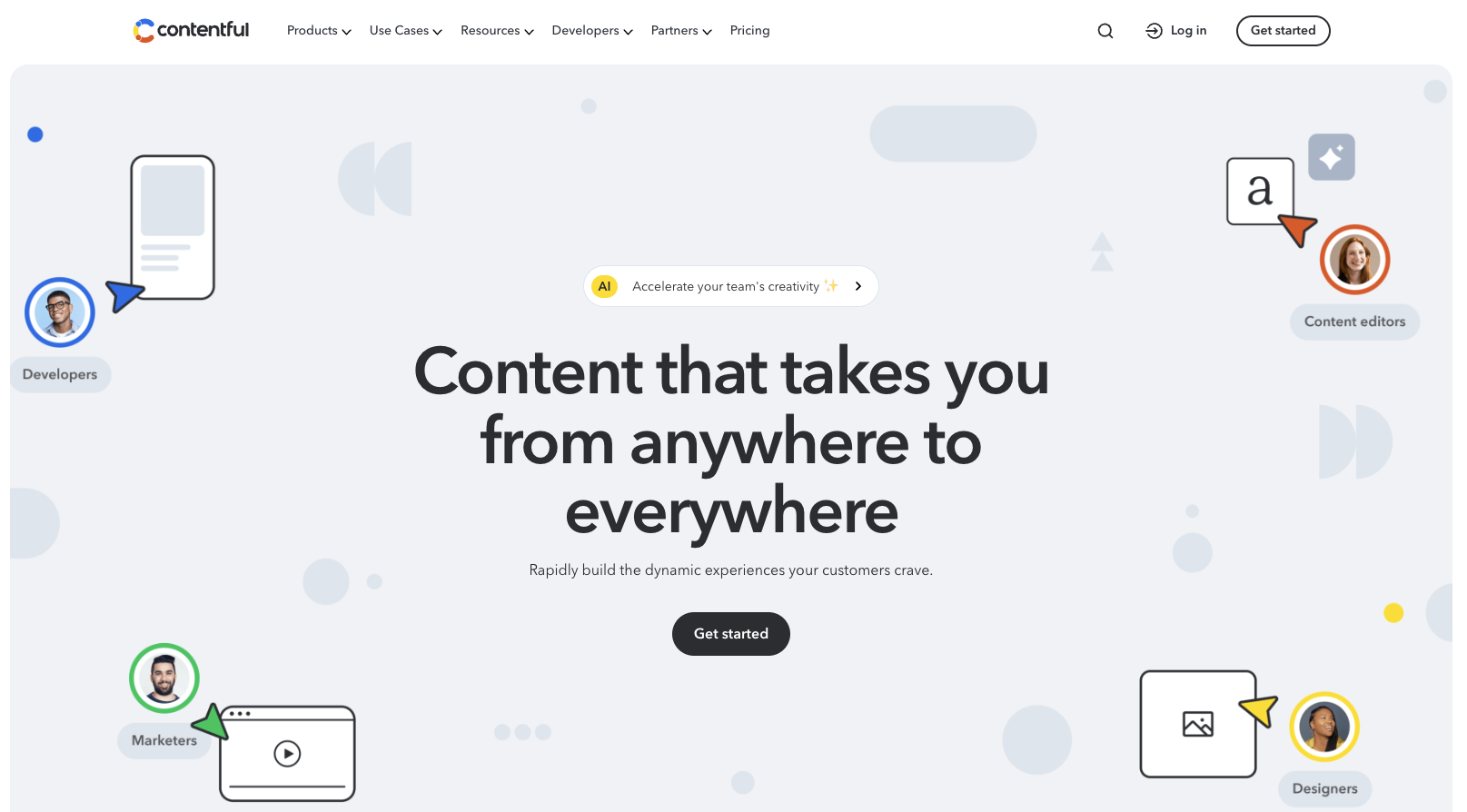 Screenshot from: contentful.com, July 2024.
Screenshot from: contentful.com, July 2024.
Contentful is an API-first headless CMS geared towards large organizations with complex content requirements.
It’s well-suited for global, multi-site content platforms. Content types and relationships allow for well-structured, multi-locale content. The app framework enables customizing the editorial experience.
Why It’s Good:
Flexible content modeling with validations and relationships. App framework for extending functionality. Localization features for multi-language content. Multiple API options (REST, GraphQL, Content Delivery API).Potential Drawbacks:
Higher learning curve due to extensive features and concepts. Pricing can be prohibitive for smaller projects.Tips and Tricks:
Use Link Fields to model content relationships and references. Leverage Environment Aliases to streamline content promotion across spaces. Extend editorial capabilities with app framework and UI extensions.Best Hack:
Integrate Contentful with Gatsby Cloud for a powerful JAMstack setup. Contentful’s webhook triggers a new build in Gatsby whenever content changes, ensuring the static front end displays the latest published content.5. Contentstack
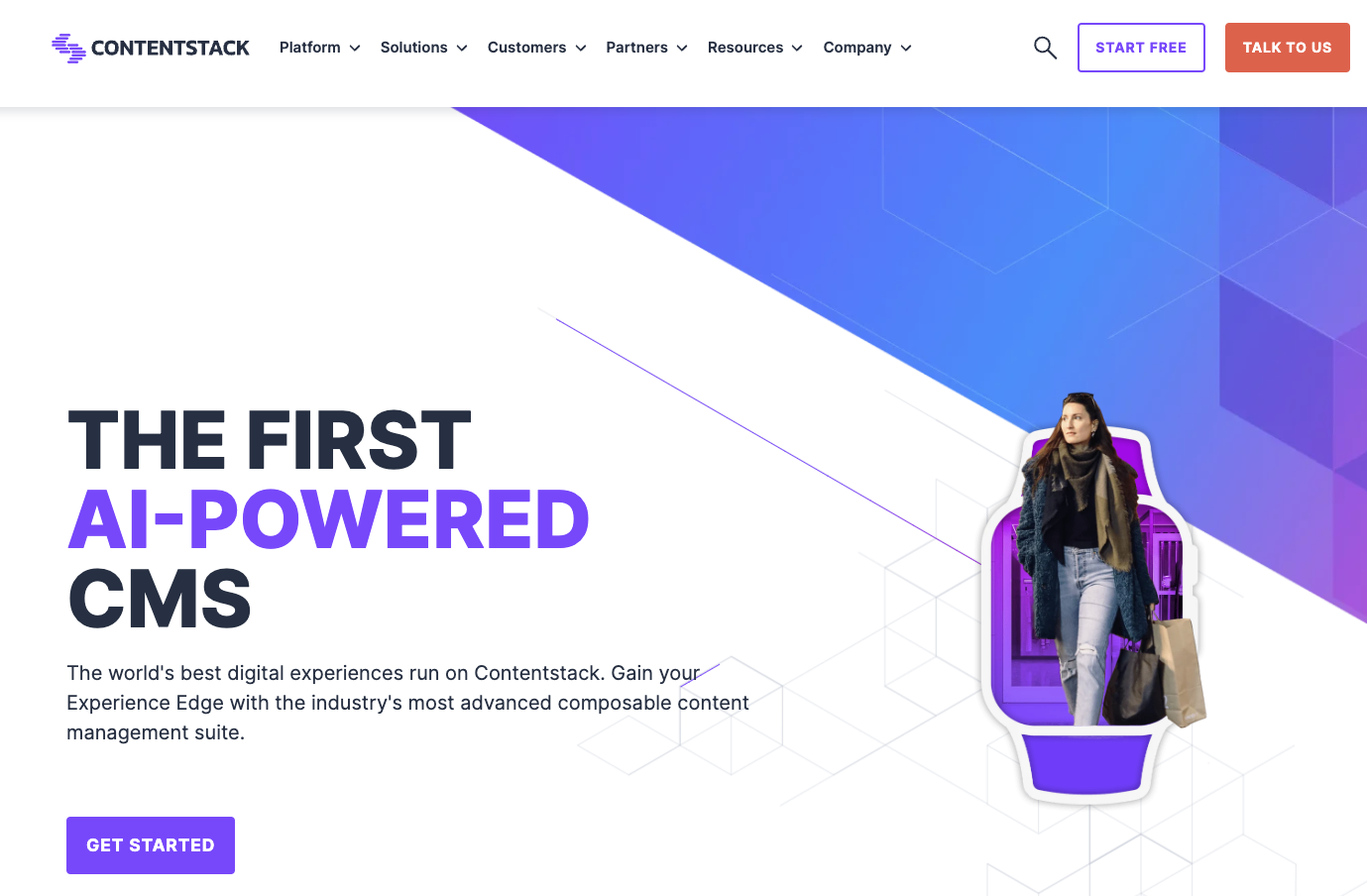 Screenshot from: contentstack.com, July 2024.
Screenshot from: contentstack.com, July 2024.
Contentstack is another enterprise-focused headless CMS, with strengths in content localization and publishing workflows.
It’s been successfully used to build global product catalogs. Content types mirror hierarchical product data, varying by locale. Workflows enable synchronized multi-region releases, with granular roles and permissions ensuring proper governance.
Why It’s Good:
Roles & permissions for fine-grained access control. Localization features for managing global, multi-language content. Content scheduling and versioning capabilities. Stackable per-locale publishing for phasing releases across regions.Potential Drawbacks:
UI can feel complex for content teams used to simpler traditional CMSs. There are some limitations around content relationships compared to other enterprise CMSs.Tips and Tricks:
Utilize the pre-built Field Editor extensions to customize the editorial interface. Leverage webhooks to trigger external processes or rebuild content changes. Use the CDN-powered Content Delivery APIs for optimal performance.Best Hack:
Combine Contentstack’s Release Workflows with Netlify’s Deploy Previews. Create a workflow automatically generating a deploy preview whenever content is moved to a new workflow stage.6. Strapi
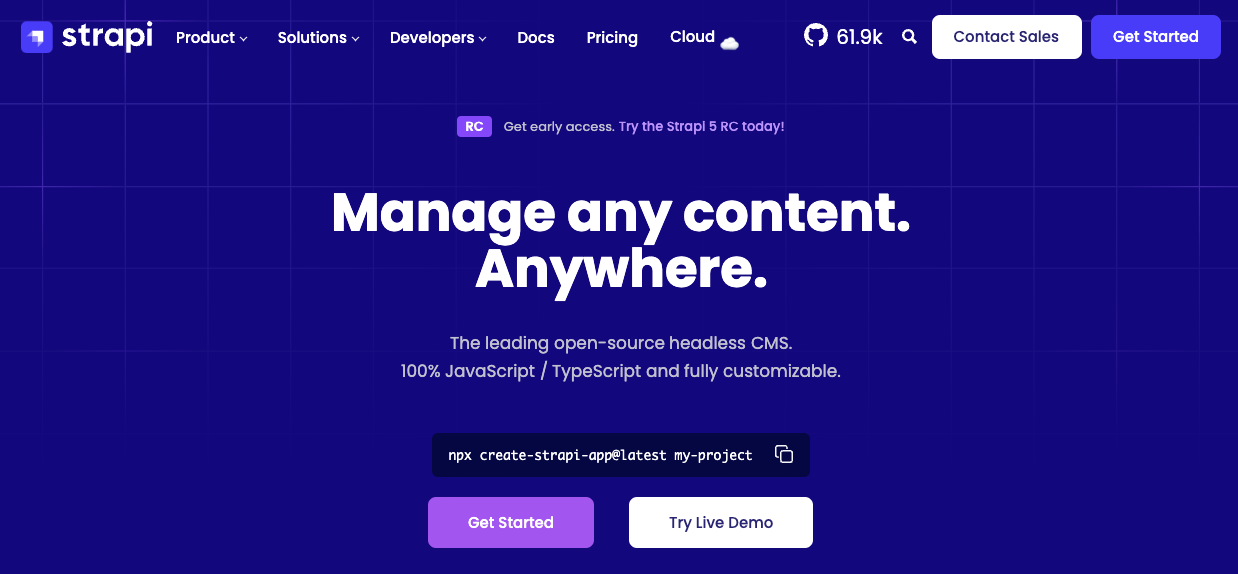 Screenshot from: strapi.co, July 2024.
Screenshot from: strapi.co, July 2024.
Strapi is a popular open-source headless CMS that prioritizes developer experience and customization.
It’s been used as a backend for developer-focused SaaS applications. Custom content types mirror application data structures, while the plugin system allows application-specific features to be added to the admin panel.
Why It’s Good:
Fully customizable API with the ability to define endpoints and logic. Extensive plugin library for extending functionality. Open-source, self-hosted option for maximum control. GraphQL support is available in addition to REST and JSON:API.Potential Drawbacks:
It requires more technical setup and maintenance than hosted solutions. Less built-in functionality out-of-the-box compared to paid options.Tips and Tricks:
Utilize Community and Custom Plugins to add project-specific features. Leverage Strapi’s JWT authentication to secure API access. Use Strapi’s Draft System for content staging and approval workflows.Best Hack:
Deploy Strapi on Heroku with PostgreSQL database. Set up GitHub integration in Heroku to automatically deploy from a repository branch. Any custom plugin code changes pushed to GitHub will trigger a rebuild of the Strapi backend on Heroku.7. Directus
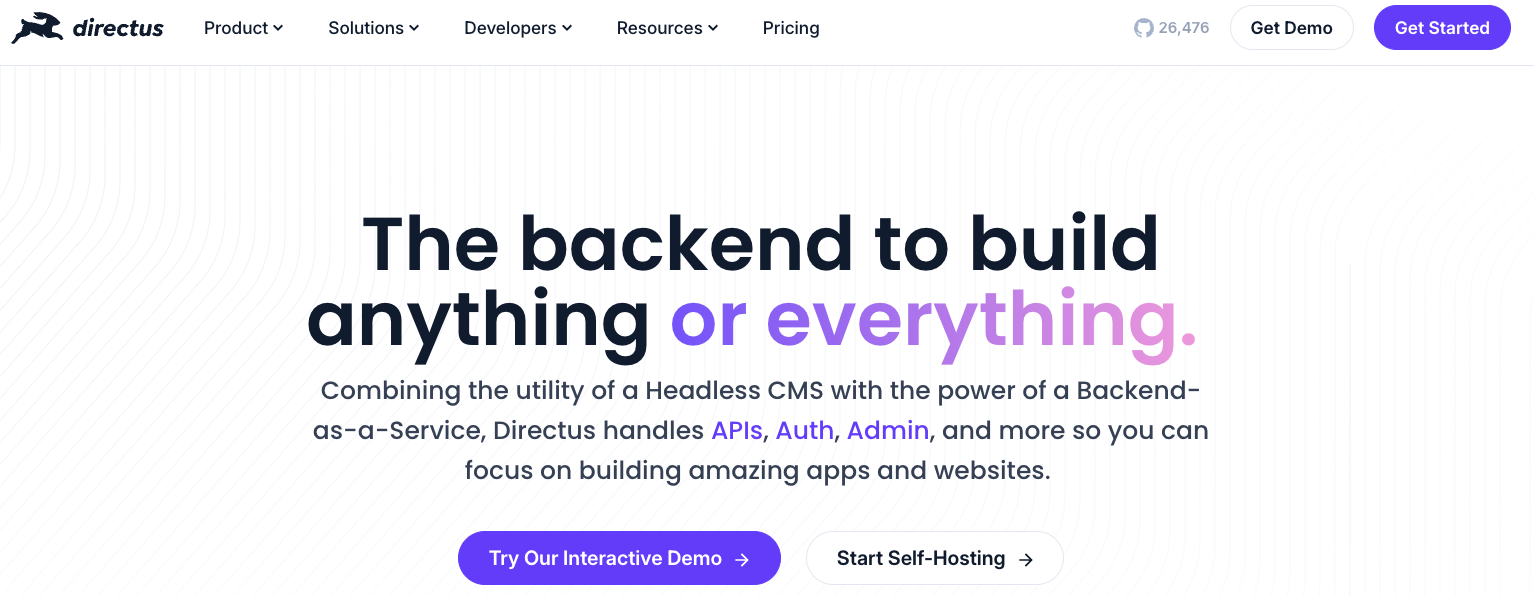 Screenshot from: directus.io, July 2024.
Screenshot from: directus.io, July 2024.
Directus is a unique headless CMS that sits on top of new or existing SQL databases, instantly providing RESTful API and GraphQL endpoints.
It’s proven helpful for projects with existing SQL databases. Installing Directus on top provides an instant content management layer and API without data migration. The platform allows for tailoring the admin panel to project needs.
Why It’s Good:
Instantly generates APIs from new and existing SQL databases. Supports various SQL databases (MySQL, PostgreSQL, MS-SQL, Oracle). Extensible platform with custom endpoints, webhooks, and event hooks. Open Data Platform for powering data-driven projects beyond typical CMS use cases.Potential Drawbacks:
Requires SQL database skills for initial setup and data modeling. Less content-focused out-of-the-box compared to other headless options.Tips and Tricks:
Use Directus Fields to shape how your database data is presented in the admin. Leverage Flows for automating data processing tasks on backend events. Enable Data Accountability for granular activity tracking and versioning.Best Hack:
Connect Directus to Metabase for powerful data visualization. By leveraging Directus’ SQL mirroring, Metabase can query and chart your content data directly, enabling advanced content analytics and reporting dashboards.8. Umbraco Heartcore
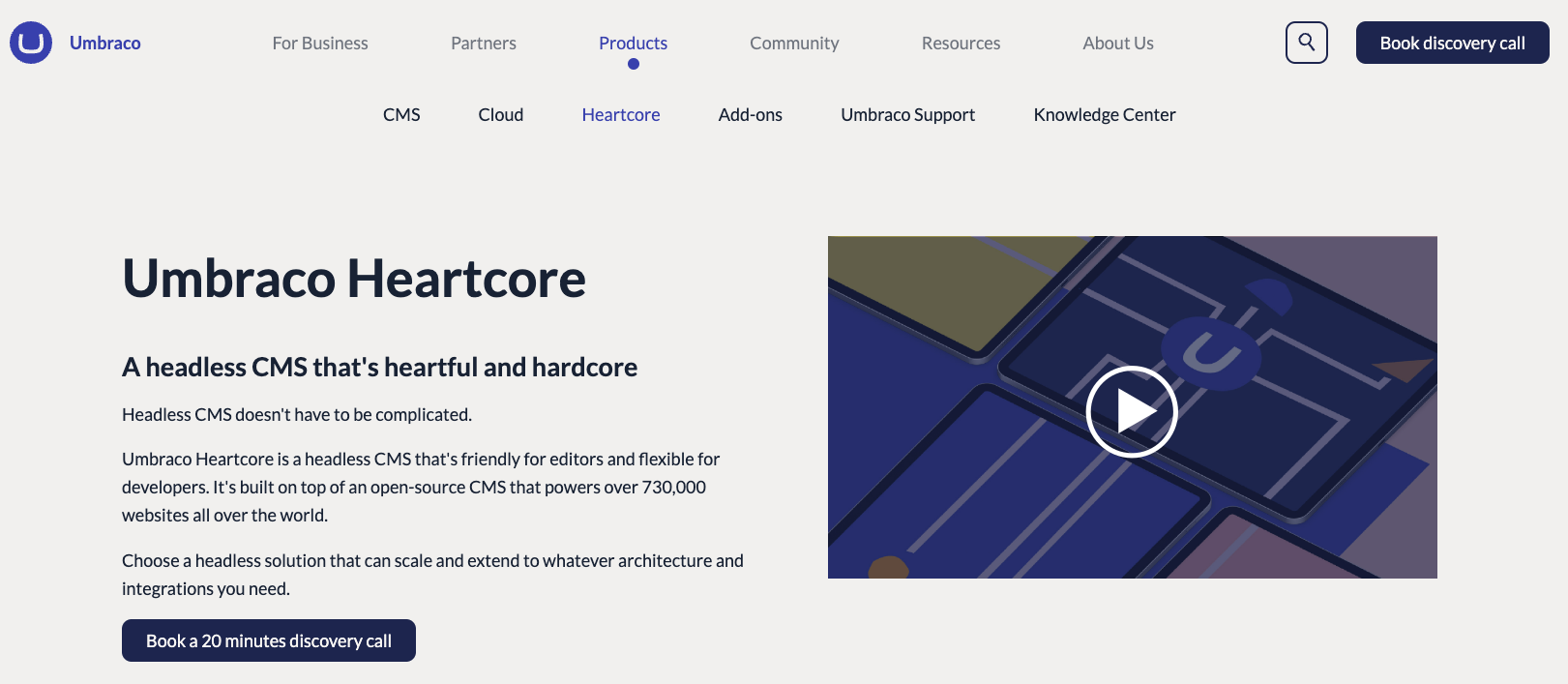 Screenshot from: umbraco.com/products/umbraco-heartcore/, July 2024.
Screenshot from: umbraco.com/products/umbraco-heartcore/, July 2024.
Umbraco Heartcore is the headless offering from the team behind the popular open-source Umbraco CMS.
It’s a natural fit for existing Umbraco users looking to adopt a headless architecture.
Document Types and Templates from the standard Umbraco CMS can be reused in Heartcore, easing the transition for content editors and .NET developers.
Why It’s Good:
Smooth transition path for existing Umbraco users. .NET-based for integrating with Microsoft stack. Umbraco Cloud for managed hosting and deployment. Familiar, feature-rich editor experience.Potential Drawbacks:
Less adoption compared to some other headless options. Requires .NET development skills for implementation.Tips and Tricks:
Use Umbraco’s Compositions for reusable content structures. Leverage Umbraco Deploy for moving content and configuration between environments. Explore the Umbraco Marketplace for editor and developer tools.Best Hack:
Integrate Umbraco Heartcore with Azure Cognitive Services for AI-powered content features. By calling Azure’s APIs from an Umbraco Controller, you can add capabilities like automated tagging, sentiment analysis, and image recognition to your editorial workflow.9. Kontent.ai
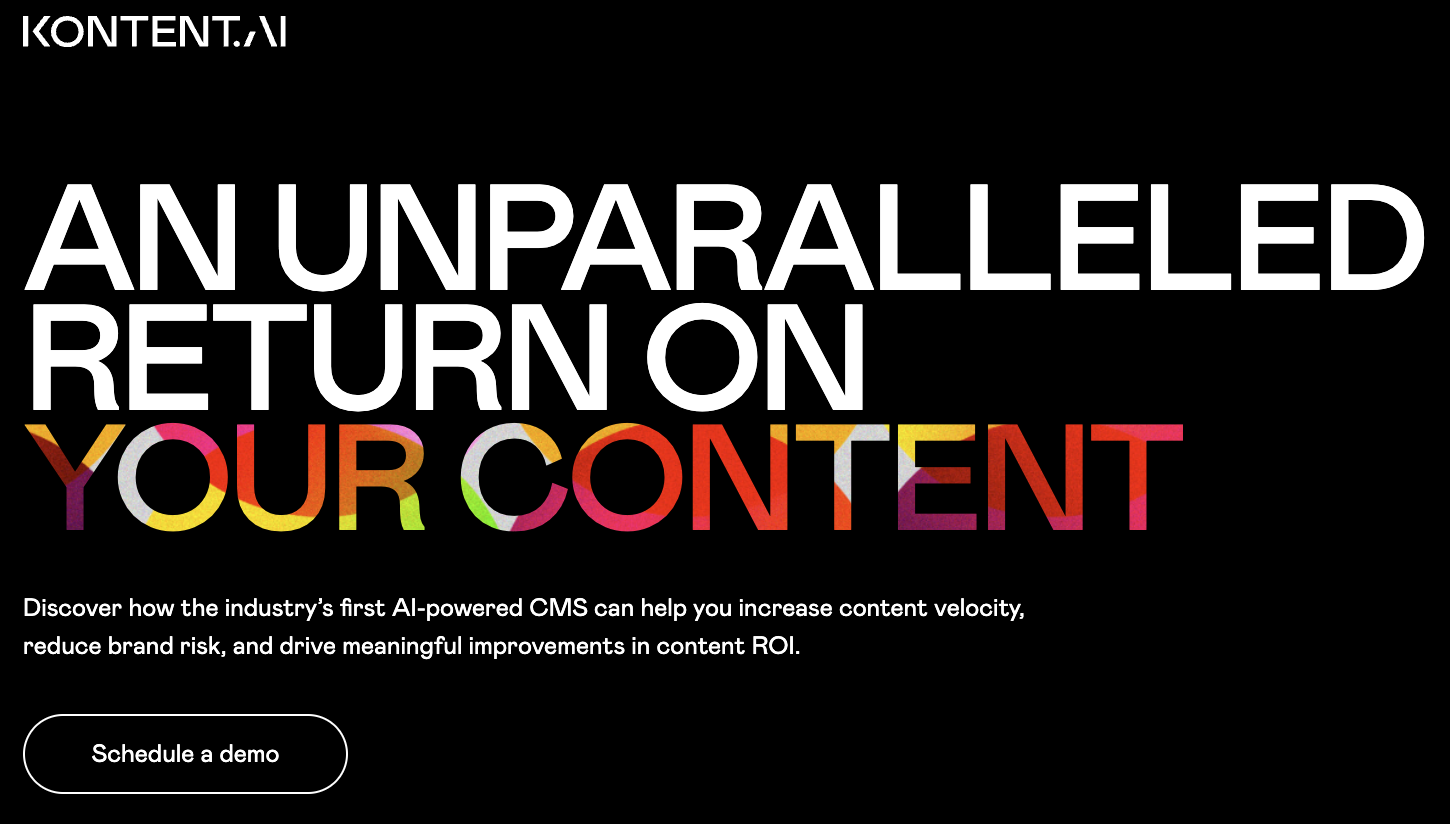 Screenshot from: kontent.ai, July 2024.
Screenshot from: kontent.ai, July 2024.
Kontent.ai differentiates itself with features geared towards content operations and planning. It’s been successfully used for large-scale content marketing initiatives.
The content calendar provides a high-level overview of content across channels while ‘Assignments’ and ‘Tasks’ keep teams in sync.
Why It’s Good:
Structured, reusable content models and components. Collaboration features like suggestions and comments. AI-powered content insights for optimizing content performance.Potential Drawbacks:
Relatively higher pricing compared to some other options. Less developer-focused compared to highly extensible options like Strapi.Tips and Tricks:
Use Linked Items to connect related content across your project. Set up Webhooks to trigger builds or notifications on content changes. Customize the Web Spotlight interface for a tailored, inline preview experience.Best Hack:
Sync Kontent with Airtable for a versatile content planning setup. Use the Kontent webhooks to send content data to Airtable. Then, leverage Airtable’s views, filters, and fields to plan and track your content production pipeline.10. Prismic
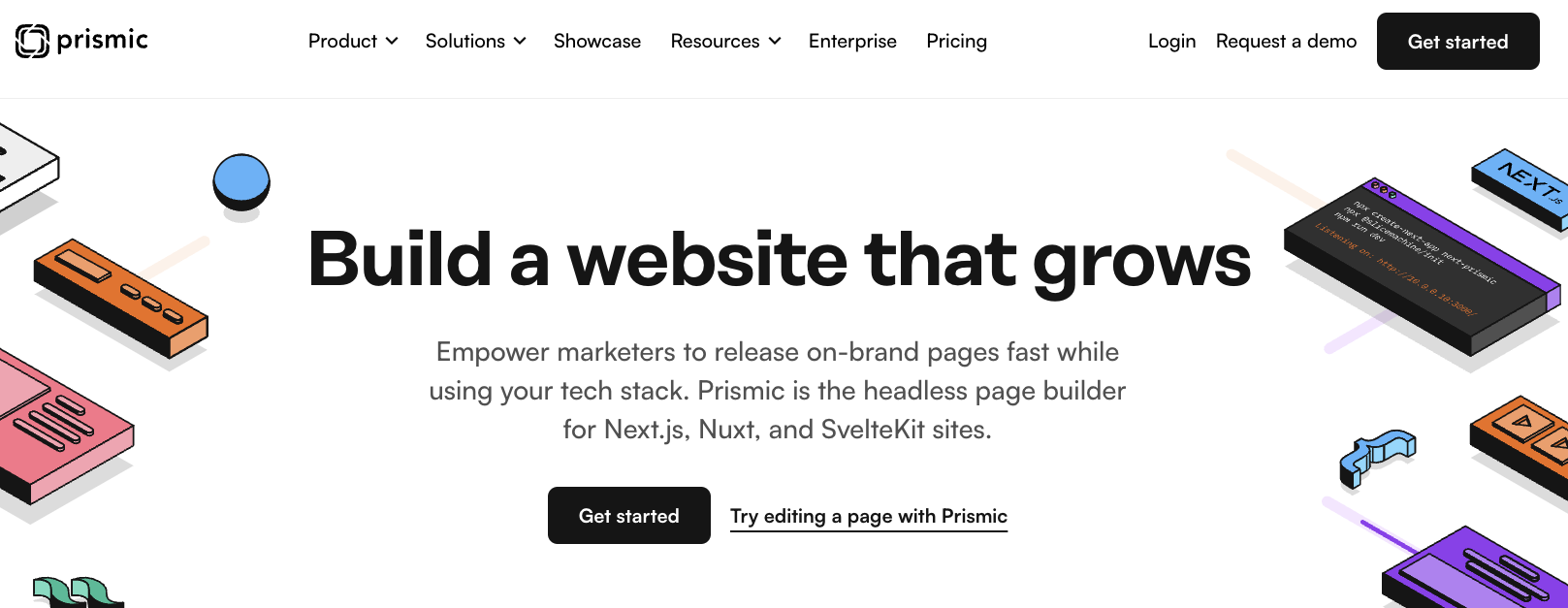 Screenshot from: prismic.io, July 2024.
Screenshot from: prismic.io, July 2024.
Prismic is a developer-friendly headless CMS focusing on sliced-based content modeling and multi-language support.
It’s been used for multilingual documentation sites with modern frameworks like Nuxt.
Prismic’s slices allow for componentizing common elements like code snippets and callouts, while the localization features enable translation management.
Why It’s Good:
Content Slices for modular, reusable page components. Strong multi-language features with built-in translation management. API browsers and development kits for popular frameworks. Simple, clean UI for content editors.Potential Drawbacks:
Fewer collaboration and workflow features compared to some enterprise options. Slice-based model can take some getting used to for traditional CMS users.Tips and Tricks:
Utilize Slice Machine for local Slice development and testing. Set up preview URLs to preview on-page content before publishing. Use Prismic’s Integration Fields with tools like Shopify and Magento for e-commerce projects.Best Hack:
Integrate Prismic with Cloudinary for advanced media management. Using a webhook to send Prismic image data to Cloudinary, you can leverage Cloudinary’s transformation and optimization capabilities while managing images within your CMS.Choosing The Right Headless CMS For Your Needs
To select the ideal headless CMS, consider these factors:
Content Complexity: Match your content structure needs with platform capabilities (e.g., Contentful for complex hierarchies, Strapi for customizable architecture). Team Skills: Align with your team’s tech expertise (e.g., Hygraph for GraphQL users, Directus for SQL pros). Localization: For multilingual content, prioritize platforms with strong localization features, such as Contentstack or Contentful. Integration: Ensure compatibility with your existing tech stack through APIs, SDKs, or plugins. Collaboration: For large teams, consider platforms with advanced workflow management (e.g., Kontent.ai) or real-time collaboration (e.g., Sanity). Pricing and Scalability: Balance cost with features and growth potential. Open-source options like Strapi offer savings, while enterprise solutions like Contentful provide high-end features.Explore options, run proof of concepts (POCs), and gather team feedback before deciding.
A well-chosen headless CMS and ongoing optimization will equip you to handle current and future content challenges.
More resources:
The 10 Best Website Builders To Consider 2024 Mastering Content Mapping: A Strategic Approach To Boost SEO Content Marketing: The Ultimate Beginner’s Guide to What WorksFeatured Image: A9 STUDIO/Shutterstock

 JimMin
JimMin 









